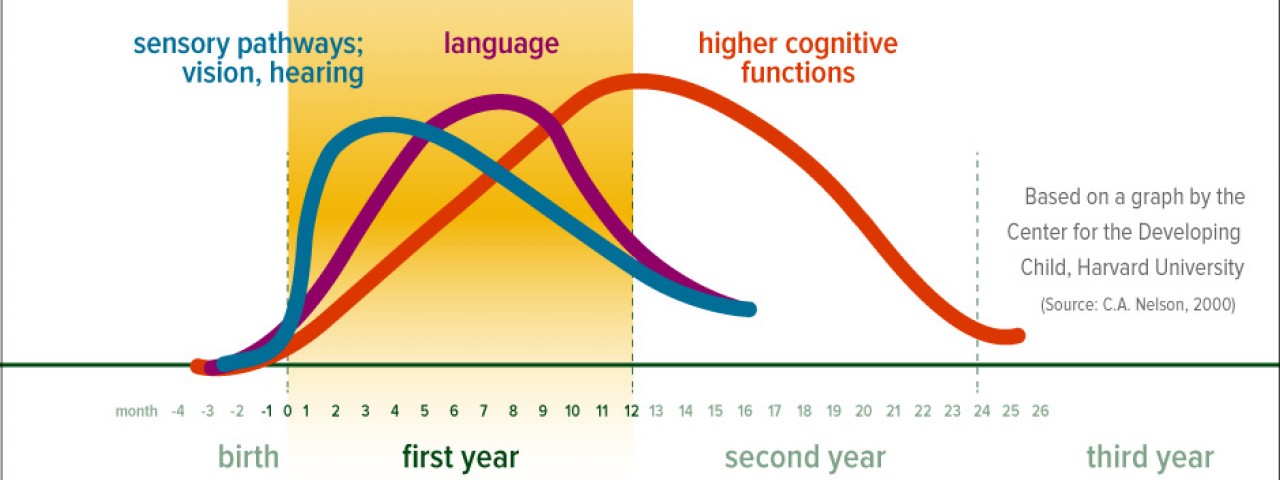The Foundation to Communicating, Language, and Learning
- Tweet

The next few editions of Research to Policy focus on the early childhood development of the senses: hearing, vision, taste, touch, and smell. These senses are critical to the developmental well-being of children. In the current issue, for example, we focus on the sense of hearing. For most children, hearing and listening are vital ways to interact with the world themselves, and they become vital aspects of early childhood development that translate into language and literacy development.
Your Baby is Listening
The research tells us that even within the womb, a developing baby is listening to the outside world. Only a few weeks after being born, babies are able to differentiate their mother’s voice from other adults, and can tell the difference between normal and ‘stressed’ voices. Hearing develops before vision, and helps to support a baby’s developing sense of security and comfort in the world as they listen to their parents’ voices even before they come to recognize their faces.
Your Baby Learns by Hearing
Parents’ words, laughter, and praise feed a child’s developing brain with vital information about the world around them. Is this new world safe? Is it happy? In time, the associations between sounds and meanings transform into the foundations for language: laughter means delight and happiness: lullabies mean comfort and relaxation. For most children, making these connections between sounds and meanings become the building blocks for communicating, for language, and for learning.
